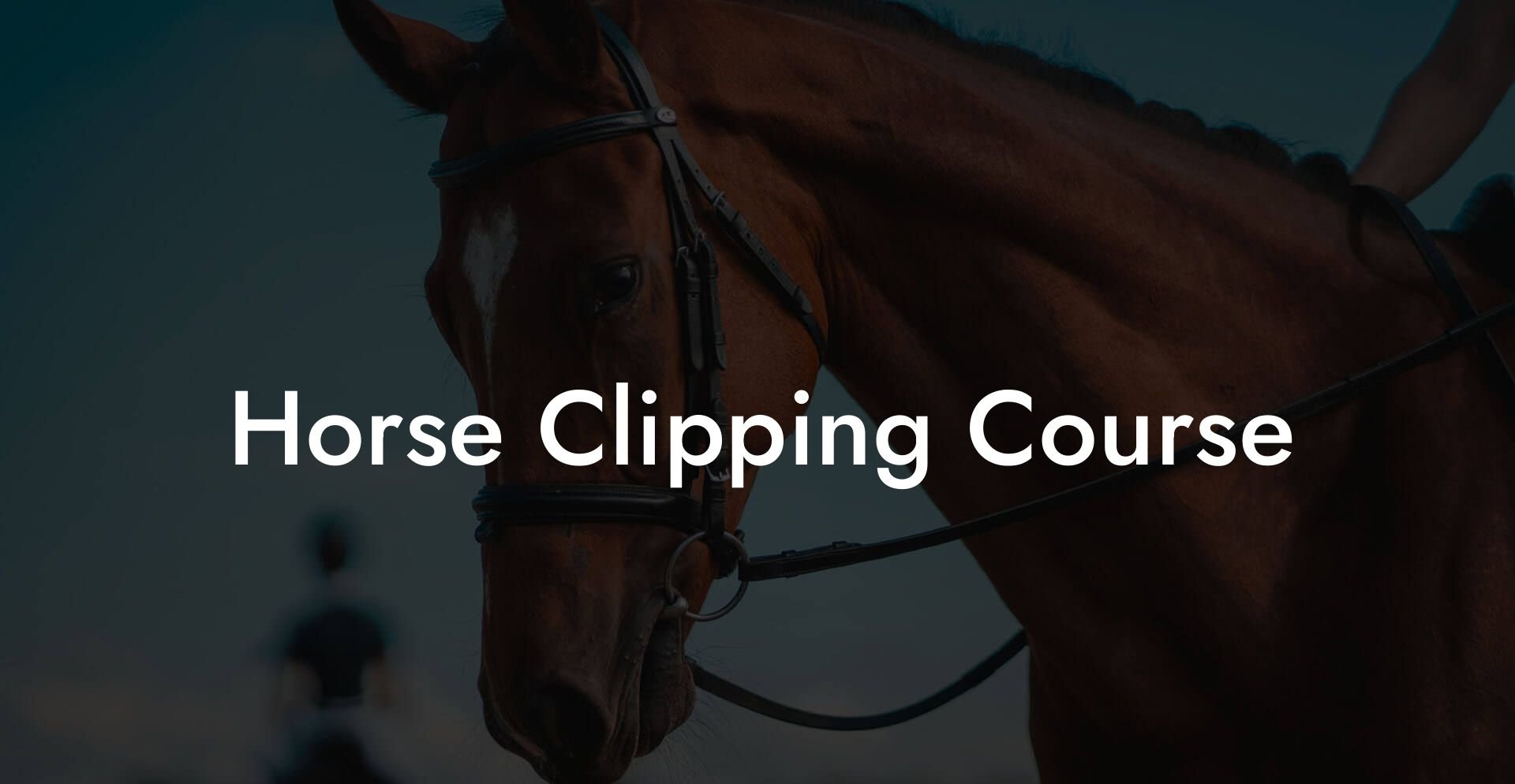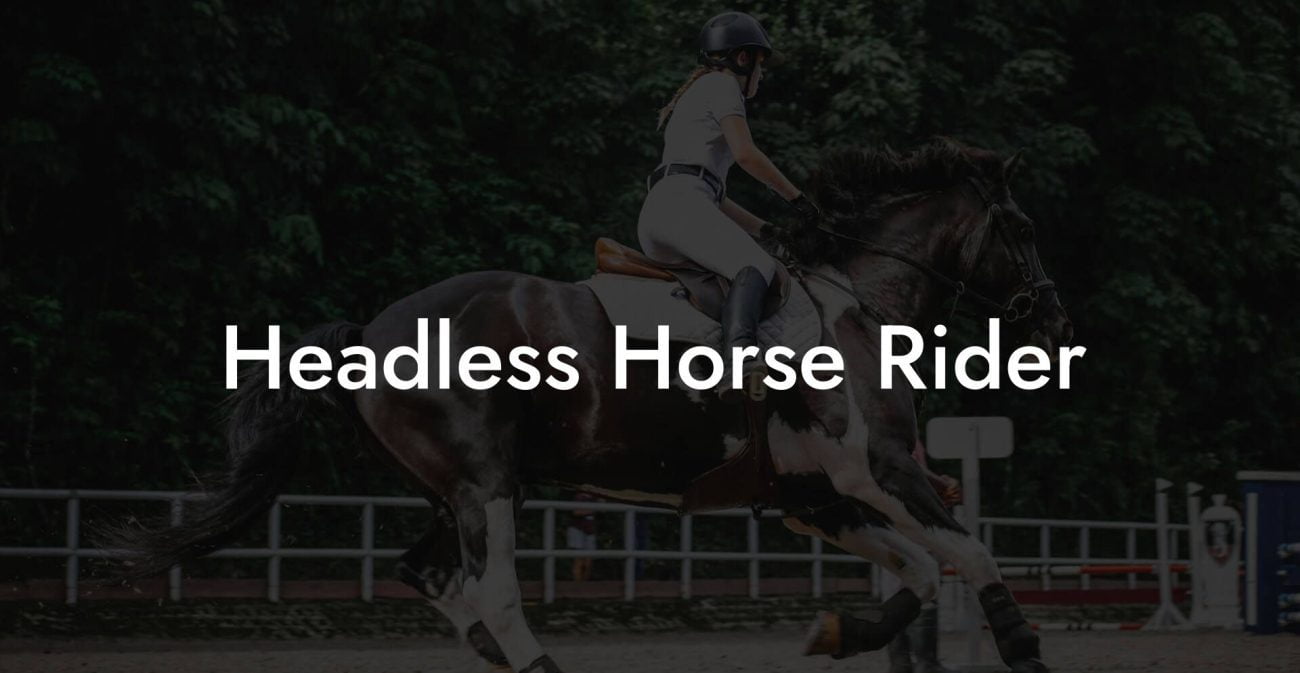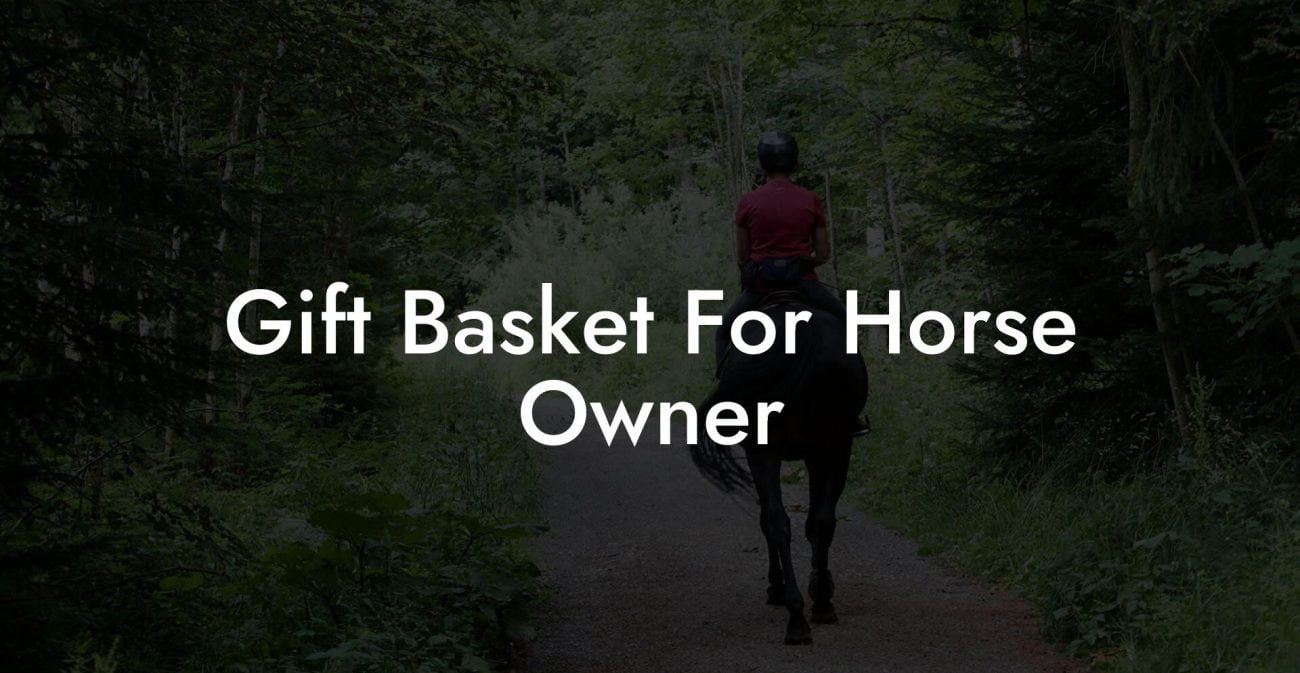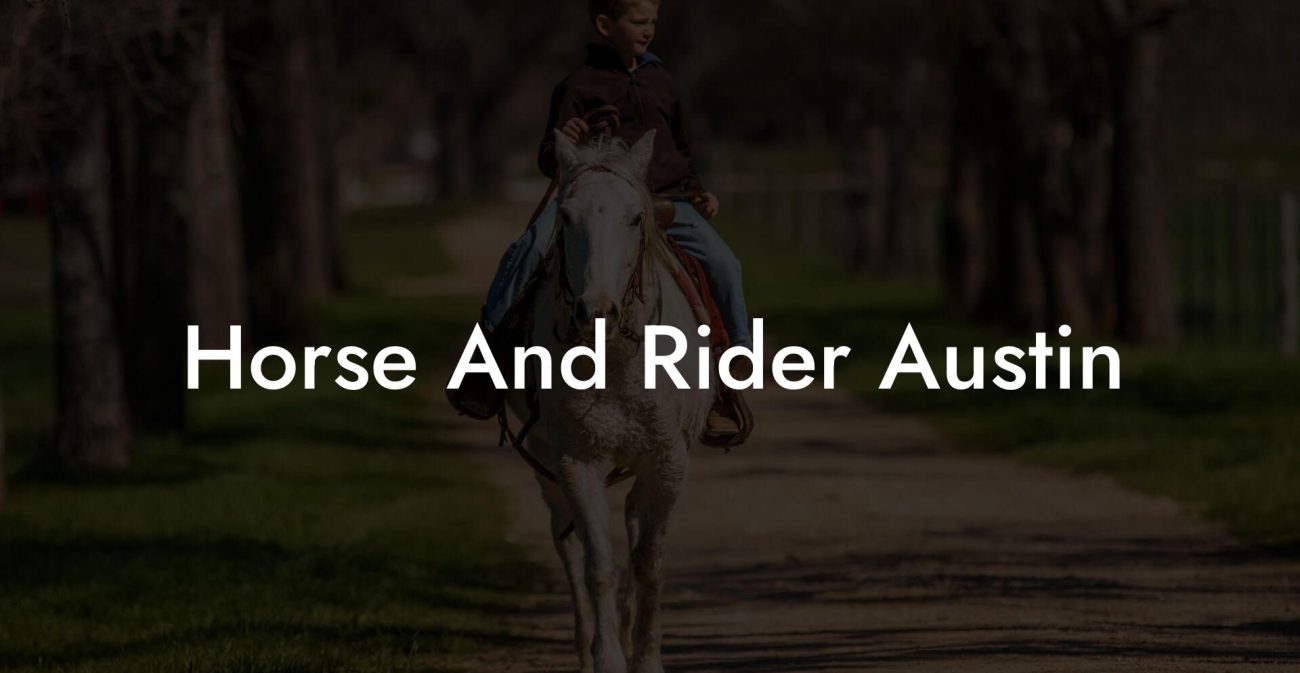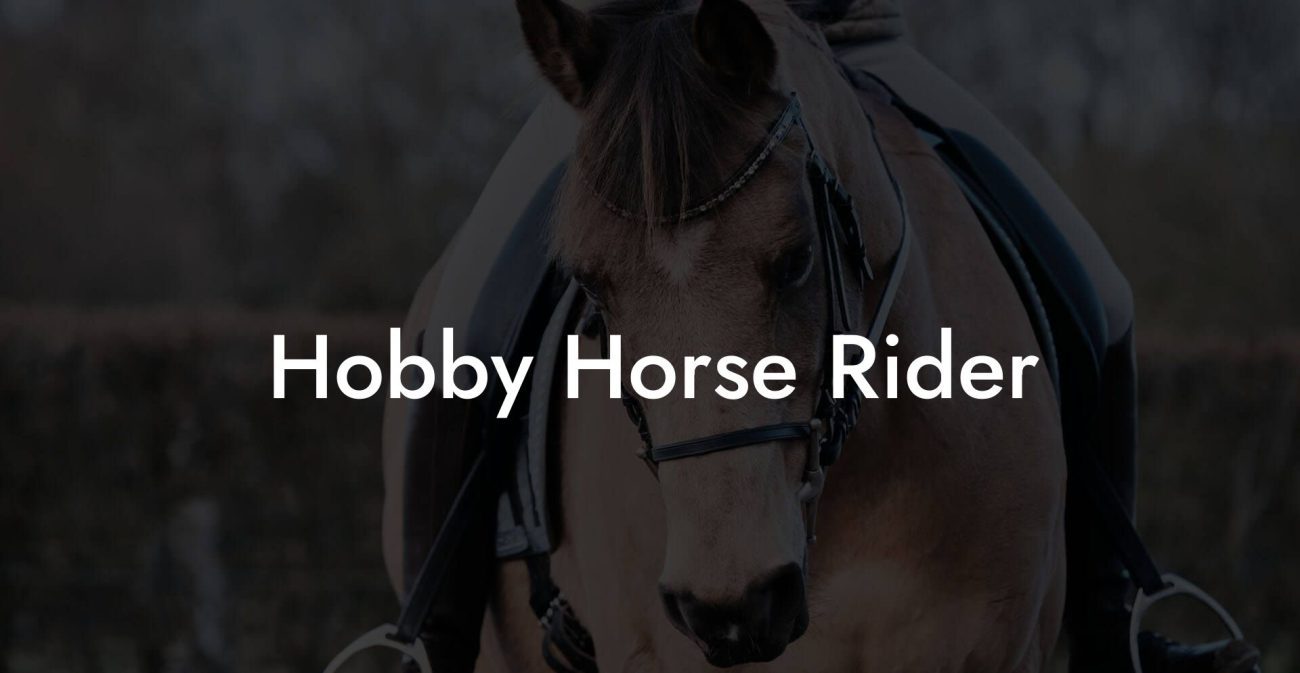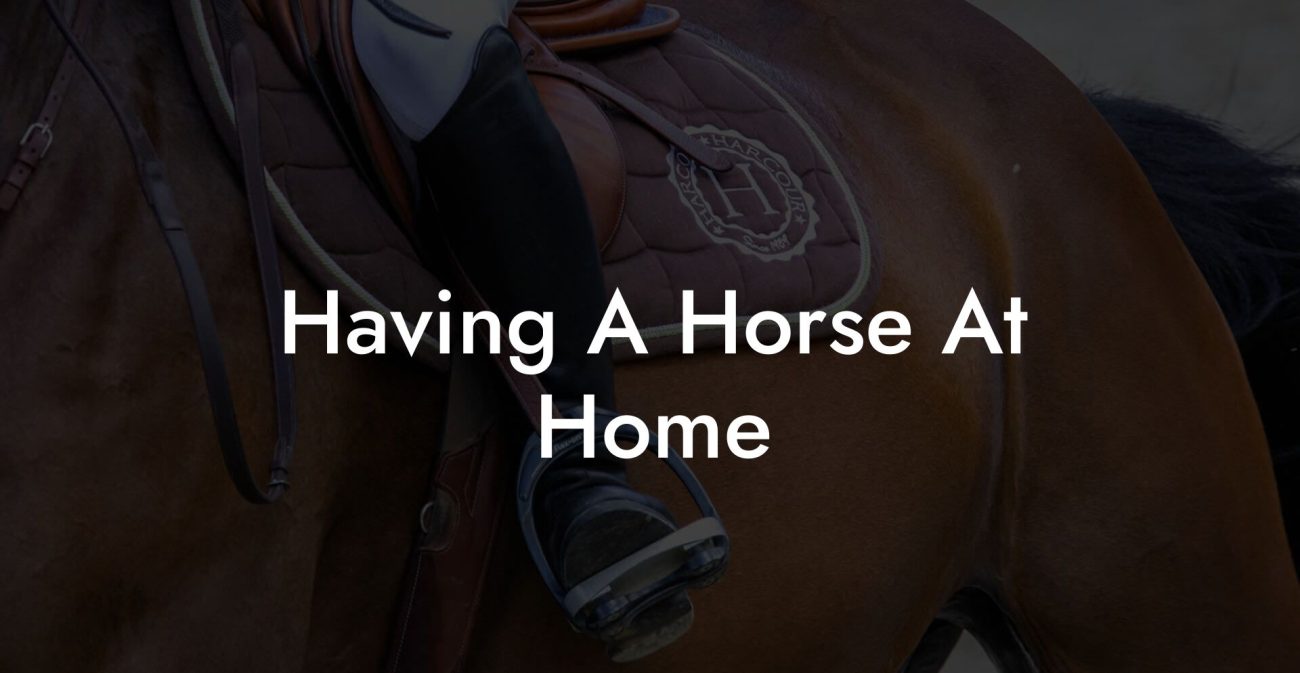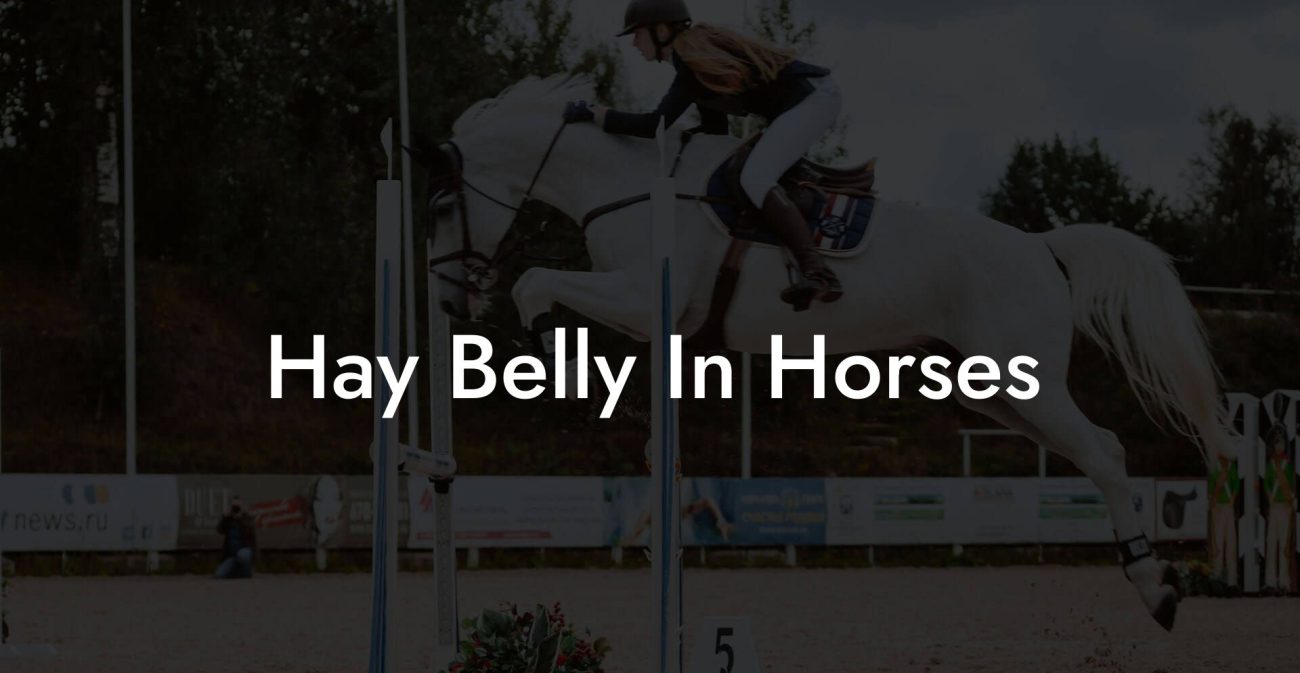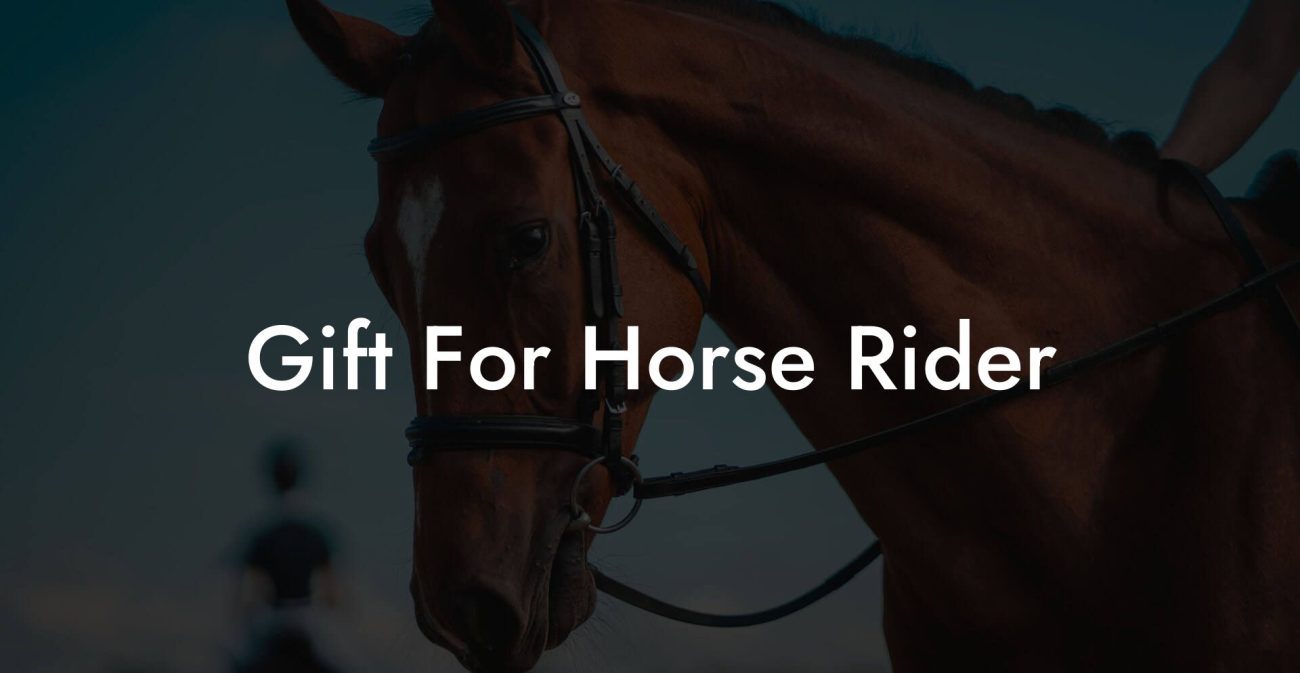Ever wondered how mastering a horse clipping course could transform your bond with these majestic creatures while leveling up your equine care game? Picture yourself confidently wielding state-of-the-art clippers, seamlessly blending modern techniques with old-school charm, and connecting with horses in a way that’s both practical and downright exhilarating. In this in-depth guide, we’re diving headfirst into everything you need to know about horse clipping, from the tools and techniques to the safety tips and grooming hacks that’ll have you clipping like a pro in no time.
Quick Links to Useful Sections
- Unlocking the World of Horse Clipping: What It’s All About
- The Evolution of Horse Clipping: From Basic Grooming to a Professional Craft
- Why Enroll in a Horse Clipping Course? The Benefits Beyond the Shear
- Core Components of a Comprehensive Horse Clipping Course
- Anatomy and Coat Types
- Equipment Mastery
- Clipping Techniques and Strategies
- Safety Protocols and Best Practices
- Advanced Styling and Customization
- Equipping Yourself: The Tools and Gadgets You Need for Horse Clipping
- Modern Clippers and Trimmers
- Blade Selection and Maintenance Kits
- Additional Grooming Tools
- Protective Gear for You and Your Equine Partner
- Getting Hands-On: Step-by-Step Techniques for Effective Horse Clipping
- Step 1: Preparing Your Horse and Workspace
- Step 2: Choosing the Right Technique for the Task
- Step 3: Mastering the Art of Clipper Handling
- Step 4: Finishing Touches and After-Care
- Safety First: Essential Tips and Best Practices for Horse Clipping
- Understanding Horse Behavior
- Tools and Equipment Maintenance
- Setting Up a Safe Environment
- Maintaining a Calm Demeanor
- Advanced Techniques: Pushing Your Horse Clipping Skills to the Next Level
- Precision Clipping for Competitive Horses
- Seasonal Clipping Variations
- Integrating Eco-Friendly and Sustainable Practices
- Integrative and Holistic Equine Grooming: Merging Technique with Passion
- Resources and Community Support: Your Next Steps in the Horse Clipping Journey
- Workshops and Live Demonstrations
- Online Courses and Webinars
- Social Media and Forums
- Books and Publications
- Join a Local Equine Club
- Frequently Asked Questions: Horse Clipping Course
- Your Journey to Mastering Horse Clipping: Embrace the Art of Equine Grooming
Unlocking the World of Horse Clipping: What It’s All About
Horse clipping isn’t just about giving your four-legged friend a snazzy new look, it’s an essential part of equine care that promotes comfort, hygiene, and overall health. Whether you’re a seasoned rider or a newbie dreaming of the open pasture, learning the art of horse clipping can help you understand your horse’s unique coat needs, prevent skin issues, and boost performance through better temperature regulation.
A horse clipping course dives deep into the practicalities of grooming, combining theory with hands-on practice. You’ll learn not only how to groom but also why clipping is important in different seasons, how it affects movement and fitness, and even the best times to trim down for competition or show purposes. Get ready to break away from the traditional image of dusty barns and outdated clippers, in today’s world, horse clipping is a blend of high-tech innovation, sustainable practices, and a dash of aesthetic flair.
In this guide, we’ll break down every aspect of the horse clipping process, ensuring you’re fully equipped with the knowledge you need. From choosing the right equipment to mastering the techniques that make the difference between basic grooming and true equine artistry, consider this your roadmap to an empowered equine grooming journey.
The Evolution of Horse Clipping: From Basic Grooming to a Professional Craft
Gone are the days when horse clipping was seen solely as a utilitarian chore. Today, it’s an art form that marries precision, creativity, and animal welfare. With a growing emphasis on holistic equine care, modern horse clipping courses are designed not only to teach the mechanics but also to impart a deep respect for equine anatomy, skin health, and overall well-being.
Historically, clipping was primarily reserved for show horses or for their convenience during hot weather, but the practice has evolved. Now, innovative grooming techniques blend modern technology, like cordless clippers and adjustable blade systems, with time-honored methods. This combination has created a comprehensive approach that addresses both appearance and health.
As the popularity of equestrian sports and recreational riding has surged, so too has the demand for professional grooming skills. Today’s courses cover everything from basic clipper maintenance to advanced styling techniques, ensuring that every horse owner, whether chasing the thrill of the arena or simply enjoying long days in the pasture, can care for their horse with confidence and style.
Why Enroll in a Horse Clipping Course? The Benefits Beyond the Shear
Investing in a horse clipping course isn’t just about learning how to use clippers correctly, it’s about opening up a new dimension of horse care that can enrich your daily routine and elevate your equine partnership. Let’s break down the multifaceted benefits:
- Enhanced Horse Health: Regular clipping helps prevent skin irritations, controls parasites, and reduces the heat load during warmer months. A well-groomed coat can dramatically improve your horse’s comfort and performance.
- Strengthened Bond: Grooming is a tactile, trust-building activity. Spending time carefully clipping and caring for your horse fosters deeper communication and nurtures a stronger bond between you and your equine partner.
- Skill Diversification: Whether you’re a competitive rider or a weekend warrior, mastering horse clipping adds a valuable skill to your equine repertoire. It can also open opportunities to work in stables, grooming salons, or even launch your own business.
- Cost Savings: Learning to clip your horse properly means you’ll save money in the long run by reducing the reliance on professional groomers. Plus, smart clipping prevents expensive skin treatments later.
- Confidence and Creativity: There’s an undeniable sense of pride in doing a great job. Over time, you might experiment with stylistic trims or creative patterns for special events, infusing every session with a bit of personal flair.
Ultimately, a horse clipping course empowers you with techniques that promise both functional and aesthetic rewards, ensuring your horse looks great and feels even better.
Core Components of a Comprehensive Horse Clipping Course
A truly world-class horse clipping course goes well beyond the basics. Here’s what you can expect to dive into:
Anatomy and Coat Types
Understanding your horse’s coat is essential. Courses will cover the anatomy of a horse’s skin and coat, distinguishing between the different hair types, such as the mane, tail, and body hair. You’ll learn how various breeds have unique grooming needs and the impact that seasonal changes have on your horse’s coat.
Equipment Mastery
The right tools can transform your clipping experience. Explore the latest innovations in clippers, from rechargeable battery models to specialized blades designed for different hair textures. You’ll also learn about essential accessories like combs, brushes, and protective gear for both you and your horse. Proper maintenance and cleaning routines for your equipment are also a major focus to ensure longevity and hygienic practices.
Clipping Techniques and Strategies
The heart of the course lies in mastering the techniques. Instruction on handling the clippers with precision, choosing the right guard lengths, and ensuring an even cut across the body are all central topics. Detailed lessons will guide you through different techniques tailored to various grooming objectives, whether it’s a quick tidy-up or a complete makeover.
Safety Protocols and Best Practices
Safety is paramount, both for you and the horse. A robust horse clipping course dives into comprehensive safety strategies, from understanding horse behavior and body language to applying emergency first aid in case of accidental cuts or equipment malfunctions. You’ll also receive tips on setting up a safe, stress-free environment for grooming sessions.
Advanced Styling and Customization
For those looking to go beyond routine clipping, advanced modules cover artistic grooming techniques, custom styling for show horses, and even creating unique patterns for events. This section encourages creativity while maintaining the inherent functionality of the clip.
By blending theory with plenty of hands-on practice sessions, a leading horse clipping course offers a holistic educational experience that’s both rigorous and immersive.
Equipping Yourself: The Tools and Gadgets You Need for Horse Clipping
In the digital age, even horse clipping has seen its fair share of tech innovation. Let’s take a closer look at the essential gear that can make your clipping sessions smoother, safer, and far more efficient:
Modern Clippers and Trimmers
At the core of your clipping arsenal is a reliable set of clippers. Look for models that offer adjustable speed settings, ergonomic designs, and cordless convenience. Many professionals favor brands that provide quiet motors to keep the horse calm during the grooming process. Whether you opt for a heavy-duty model for full-body clipping or a lightweight trimmer for detailed work, investing in quality equipment is key.
Blade Selection and Maintenance Kits
Much like a barber’s assortment of blades, a horse clipping course will teach you about different blade types and guard sizes. Learn which blades work best for thick winter coats versus lighter summer trims and how to sharpen and disinfect them. A well-maintained blade not only ensures a crisp cut but also minimizes the risk of nicks or irritation.
Additional Grooming Tools
Don’t underestimate the power of a good brush! Comb through your horse’s coat with a selection of brushes designed for different hair textures. Slicker brushes, curry combs, and de-tangling combs each play a role in preparing the coat for clipping, ensuring that the clippers glide smoothly without snagging.
Protective Gear for You and Your Equine Partner
Safety extends to protective clothing and equipment. Consider investing in durable gloves, a long-sleeved, breathable apron, and even ear protection if you’re sensitive to noise. For your horse, grooming sheets and a well-padded grooming area help keep them comfortable and secure during a clip session.
Whether you’re starting out or upgrading your toolkit, the right equipment is a game-changer, ensuring that every clip is a step towards both enhanced performance and stylish presentation.
Getting Hands-On: Step-by-Step Techniques for Effective Horse Clipping
Now that you’re acquainted with the why and the how, it’s time to roll up your sleeves and dive into the step-by-step process of horse clipping. The procedure itself is an art that balances precision, timing, and a gentle touch.
Step 1: Preparing Your Horse and Workspace
Before you even switch on your clippers, preparation is crucial. Start by ensuring your horse is calm and comfortably positioned, you might want to clip in a familiar barn area where they feel safe. Brush your horse thoroughly to remove loose hair, dirt, and tangles. This not only makes the clipping process faster but also reduces the risk of pulling on knots.
Set up your workspace with all your tools organized and within reach. A well-lit, clutter-free environment is essential for both precision and safety. Lay out your clippers, additional blades, combs, and any necessary cleaning supplies, and ensure that any electrical cords are safely routed away from busy areas.
Step 2: Choosing the Right Technique for the Task
Depending on the purpose of the clip, your approach may differ dramatically. For a quick summer trim, you might only need light clipping around the belly and legs. For full-body grooming ahead of a show, the process becomes more detailed, requiring gradual layering to ensure an even, professional finish.
Most courses recommend starting at the neck and working down the body, always moving in the direction of hair growth. This minimizes the risk of skin irritation and ensures a smoother finish. Remember, consistency is the secret, steady, deliberate strokes are far preferable to quick, haphazard snips.
Step 3: Mastering the Art of Clipper Handling
Handling clippers is an acquired skill that improves with practice. Grip the clipper comfortably and hold it at the recommended angle for your chosen blade. Begin with slow, controlled movements, frequently checking your progress. Adjust the guard length as necessary for different parts of the horse’s body, ensuring that you’re not cutting too close or leaving too much extra length.
Throughout your practice, keep an eye on the clippers’ performance, if you notice any snagging or uneven cutting, pause and clean the blade or adjust your technique. The goal is a smooth, even trim that keeps the horse looking and feeling comfortable.
Step 4: Finishing Touches and After-Care
Once you’ve completed the clipping itself, the finishing touches are what really elevate your work. Use a light brush to smooth down the hair and check for any missed spots or uneven areas. Depending on your preference and the horse’s needs, you might then apply a conditioning spray or grooming oil to soothe the skin and enhance the sheen of the coat.
Finally, give both you and your horse a well-deserved break. Reward your equine friend with a treat or a few moments of extra affection, grooming sessions are about building trust as much as they are about aesthetics.
Safety First: Essential Tips and Best Practices for Horse Clipping
Safety is at the heart of proper horse clipping. Not only does it protect your horse, but it also ensures that you can continue to enjoy and perfect your craft. Here are some tried-and-true best practices:
Understanding Horse Behavior
Every horse is unique, and understanding their behavior is key. Observe your horse’s body language, ears pinned back, sudden movements, or vocalizations might indicate stress or discomfort. Building a bond of trust before starting a clip will help ensure a calmer, safer experience.
Tools and Equipment Maintenance
A poorly maintained tool can lead to mistakes or even injury. Regularly clean and sharpen your blades, replace worn-out parts promptly, and always check that your clippers are functioning correctly before each session. A malfunctioning tool is not only inefficient but can also cause unnecessary stress to your horse.
Setting Up a Safe Environment
Ensure the area is free of obstacles and implements proper lighting so that every movement is clear. Keep a first aid kit handy, accidents can happen, and being prepared with basic supplies and a knowledge of equine first aid can make all the difference.
Maintaining a Calm Demeanor
Your energy is contagious. Enter each session with calm confidence. A soothing voice and steady hands can ease your horse’s anxieties and create a relaxed atmosphere that benefits both you and your equine companion.
Adhering to these safety protocols not only prevents mishaps but also builds your reputation as a thoughtful, professional groomer who values the well-being of every horse.
Advanced Techniques: Pushing Your Horse Clipping Skills to the Next Level
For those who crave a bit more challenge beyond the basics, advanced horse clipping techniques provide an opportunity to refine your skills and unleash your inner artist. These modules are designed for enthusiasts who are ready to delve into creative styling and more nuanced grooming strategies.
Precision Clipping for Competitive Horses
In competitive environments, a horse’s appearance can be as critical as its performance. Advanced techniques focus on precision and consistency to ensure that your horse not only looks its best but also benefits from the functional advantages of a well-maintained coat. Learn how to execute intricate patterns, create clean lines, and apply layering techniques that emphasize muscle definition and movement.
Seasonal Clipping Variations
Different seasons demand different clipping strategies. In the summer, the focus is on keeping the horse cool and free from matting, while in the winter, you might aim to leave a bit more length for insulation while still preventing tangles and debris. Advanced courses highlight how to tailor your approach according to weather conditions, health considerations, and the specific needs of each breed.
Integrating Eco-Friendly and Sustainable Practices
Today’s equine caregivers are increasingly mindful of environmental impact. Learn about eco-friendly grooming products, energy-efficient clipper technologies, and sustainable waste disposal practices that help preserve the natural world. Adopting these green methods not only benefits the environment but also positions you as a forward-thinking, responsible professional.
By mastering these advanced techniques, you'll elevate your grooming style and contribute to a more thoughtful, sustainable approach to equine care.
Integrative and Holistic Equine Grooming: Merging Technique with Passion
Horse clipping isn’t just about technical skill, it’s a holistic practice that weaves together care, creativity, and an understanding of your horse’s overall well-being. The integrative approach embraces the idea that grooming is both a science and an art, and it plays a significant role in your animal’s comfort, performance, and even emotional health.
In an integrative course, you’ll discover how to balance the mechanical act of clipping with mindful observations of your horse’s reaction. Learn to read subtle signs of discomfort, adjust your technique on the fly, and engage in mutual communication that builds trust and deepens your relationship. Whether you’re practicing deep tissue brushing techniques or slow, meditative grooming sessions, this approach encourages you to look beyond the surface and truly care for your equine partner.
Merging practical techniques with a genuine passion for animal care is what sets a great groomer apart. It’s about understanding that every clip can enhance your horse’s performance and emotional well-being, reinforcing the profound bond you share.
Resources and Community Support: Your Next Steps in the Horse Clipping Journey
No skill is developed in isolation. An essential part of mastering horse clipping is tapping into a community of like-minded enthusiasts and professionals. Here are some resources and next steps to ensure your journey is filled with ongoing growth and support:
Workshops and Live Demonstrations
Many equine centers and grooming schools host regular workshops where you can see professionals in action. Live demonstrations provide a unique perspective on real-time problem-solving and creative techniques. Attending such events can broaden your knowledge and inspire new ideas.
Online Courses and Webinars
In our digital age, access to quality education is just a click away. Plenty of online courses offer in-depth tutorials, interactive sessions, and video guides that you can access at your own pace. These platforms are ideal for fitting learning into your busy lifestyle while staying connected with the global grooming community.
Social Media and Forums
Engage with communities on Instagram, YouTube, and specialized equine forums where professional groomers and passionate amateurs share tips, reviews, and success stories. These platforms not only provide inspiration but also open up opportunities for collaboration and mentor relationships.
Books and Publications
Expand your library with books dedicated to horse grooming techniques, anatomy, and the latest industry trends. Professional journals offer insights, case studies, and detailed analyses that deepen your understanding of advanced grooming practices.
Join a Local Equine Club
Finally, consider joining an equine club or association. Networking with local professionals and enthusiasts can lead to hands-on training sessions, group clipping events, and shared opportunities that enhance your skills while fostering lasting friendships.
By leveraging these resources and immersing yourself in a supportive community, you’re not only perfecting your clipping technique but also contributing to the broader narrative of modern, sustainable, and compassionate equine care.
Frequently Asked Questions: Horse Clipping Course
Below are some of the most frequently asked questions about horse clipping courses. Whether you’re a beginner or looking to hone your skills, these answers should help clear up some common doubts.
1. What exactly is a horse clipping course?
A horse clipping course is a comprehensive training program designed to teach you how to groom, maintain, and style a horse’s coat. It covers everything from basic clipper handling and safety to advanced techniques for custom finishes.
2. Who can benefit from taking a horse clipping course?
Whether you’re an equine owner, a professional groomer, or simply a horse enthusiast, a clipping course offers valuable skills to promote better horse care and build a stronger, more trusting relationship with your animal.
3. What tools will I need to start horse clipping?
Most courses will guide you through the essentials, modern clippers, various blades and guards, combs, brushes, and personal protective gear. Detailed maintenance tips will also be provided to ensure your equipment stays in top work order.
4. How do I know which clipping technique is right for my horse?
The course will cover different techniques depending on your horse’s breed, coat type, and intended use. Whether it’s a simple trim for comfort in summer or a stylish clip for the show ring, you’ll learn how to tailor your approach.
5. Can I complete some parts of the course online?
Yes, many reputable horse clipping courses include online modules, video tutorials, and interactive webinars. However, hands-on practice under supervised conditions is key for mastering the skills.
6. Is it safe to clip my horse on my own?
With proper training and safety guidelines provided by a comprehensive course, you can confidently clip your horse while ensuring both your safety and your horse’s comfort. Always follow best practices and, if you’re uncertain, consult a professional.
7. What advanced techniques will I learn in an advanced clipping module?
Advanced techniques often cover creative styling, custom patterns, seasonal adjustments, and eco-friendly grooming practices. These techniques are designed to refine your skills and open new avenues for personal expression in equine care.
8. How can a clipping course improve my relationship with my horse?
Grooming is a bonding experience that builds trust and communication. By learning proper clipping techniques, you not only improve your horse’s appearance and health but also establish a closer, more attentive connection.
Your Journey to Mastering Horse Clipping: Embrace the Art of Equine Grooming
As you embark on your journey into the world of horse clipping, remember that each clip, each stroke of the brush, is a step towards a more beautiful and healthier equine companion. The skills you acquire in a horse clipping course not only enhance your practical ability but also nurture a deeper, more respectful bond with your horse. Every session is an opportunity to merge technical precision with creative expression.
This journey isn’t just about perfecting a trim; it’s about embracing an integrative approach to equine care. It means exploring sustainable grooming practices, harnessing modern technology, and connecting with a vibrant community of fellow horse enthusiasts. Over time, as you master both the basics and advanced techniques, you’ll find that the art of horse clipping becomes an extension of who you are, a blend of informed expertise and heartfelt passion.
Step forward with the confidence that comes from both knowledge and experience. Whether you’re clipping for health reasons, preparing your horse for competition, or simply enjoying a fulfilling hobby, the insights shared in this guide are meant to empower you, to help you carve out a niche where style meets functionality, and care meets craft.
Embrace every tip, every trick, and every lesson as you craft your own unique path in the realm of equine care. Let your journey be defined by a spirit of exploration, an open mind to innovative practices, and a commitment to strengthening the bond between you and your horse. Now’s the time to unleash your inner grooming guru and step into a world where precision, creativity, and holistic care create the perfect clip.
Your journey to mastering horse clipping starts here, dive in, practice with passion, and let every clip be a testament to the art and science of equine grooming.

